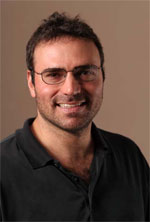 |
|
Claude B. Sirlin, MD, is Associate Professor
of Radiology at the University of California, San Diego (UCSD). He received his
BA in Biology at Harvard University and his MD at the University of California,
San Francisco. He completed residency training in Diagnostic Radiology at UCSD
and fellowship training in cross-sectional body imaging (MR, CT, US) at Stanford
University. He joined the faculty at UCSD in 2001. He is Chief of Body MRI, Head
of the Liver Imaging Research Group, and Head of Clinical Research, Division of
Body Imaging. Dr. Sirlin has dedicated many years to researching various imaging
techniques, and his current research is focused on MR imaging of liver cancer
and diffuse liver disease. He has published more than 30 papers, 5 book chapters,
65 scientific abstracts, and 50 educational exhibits, and he reviews for 5
scientific journals. Dr. Sirlin is also a dedicated teacher and mentor; in the
last four years, he has supervised over 30 undergraduates, medical students,
residents, and fellows in clinical imaging research. In 2004, Dr. Sirlin formed
the UCSD Liver Imaging Group to develop new techniques (pulse sequences,
protocols, and post-processing methods) for liver imaging. The Group actively
collaborates with hepatologists, liver surgeons, pathologists, and biostatisticians
on several clinical and animal research studies. Specific areas of interest are
liver cancer and diffuse liver disease (fibrosis, fat, and inflammation).
Dr. Sirlin's current projects include the National
Institutes of Health (NIH), National Center on Minority Health & Health
Disparities (NCMHD), Comprehensive Research Center in Health Disparities (CRCHD)
funded pilot project, which is described below.
|
